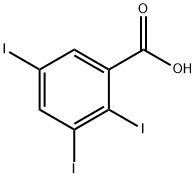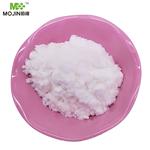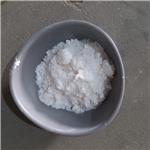Chemical Properties
beige powder
Uses
2,3,5-Triiodobenzoic Acid is a polar auxin transport inhibitor that inhibits and promotes endoreduplication in hypocotyls and cotyledons.
Application
The 2,3,5-triiodobenzoic acid (TIBA) is a contrast agent used to improve the visualization of pathological tissues using X-ray techniques. 2, 3, 5-Triiodobenzoic Acid (syn: TIBA) is used as a plant growth regulator, defoliant, and agricultural herbicide. Several investigators have shown TIBA to be successful in causing the retention of buds, blooms, and pods of soybeans. Virtually no results have been reported on using TIBA to retain the 30 to 40% flower shed that occurs with cotton[1-2].
Definition
ChEBI: 2,3,5-triiodobenzoic acid is a member of the class of benzoic acids that is benzoic acid in which the hydrogens at positions 2, 3 and 5 are replaced by iodine atoms. It is an auxin polar transport inhibitor. It has a role as a member of antiauxins. It is an organoiodine compound and a member of benzoic acids.
Biochem/physiol Actions
2,3,5-Triiodobenzoic acid (TIBA) inhibits the translocation of indole-3-acetic acid transport.TIBA inhibits the colonization of the main root cortex by Laccaria bicolor S238 N and the formation of the Hartig net.
Toxicology
2,3,5-Triiodobenzoic acid induces physiological complications like increase in oxygen reactive species (ROS), and consequently, contrast-induced nephropathies[1].
References
[1] Jéssica Sodré Silva de Abreu, Janaína Fernandes. "The contrast agent 2,3,5-triiodobenzoic acid (TIBA) induces cell death in tumor cells through the generation of reactive oxygen species." Molecular Biology Reports 48.6 (2021): 5199–5207.
[2] Freytag, et al. "Effect of Multiple Applications of 2,3,5-Triiodobenzoic Acid (TIBA) on Yields of Stormproof and Nonstormproof Cotton." Agronomy Journal 65.4(1973):610-610.




